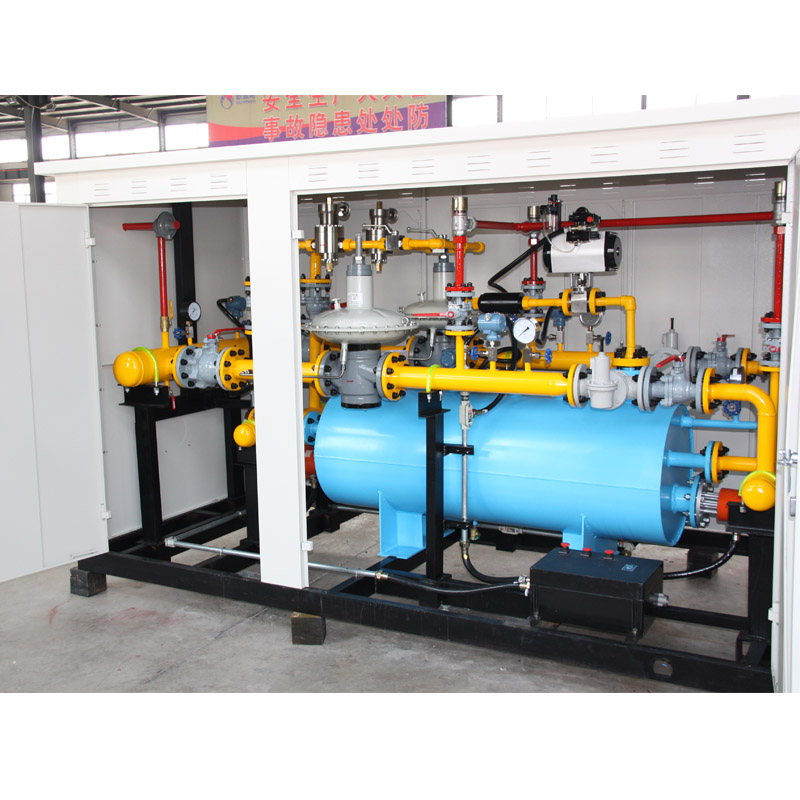
Dec . 05, 2024 15:33
Back to list
gasifier
Exploring Gasifiers A Key Technology for the Future of Energy
In the quest for sustainable and renewable energy sources, gasification has emerged as a promising technology with the potential to significantly impact global energy systems. A gasifier is a device that converts carbon-containing materials, such as biomass, coal, or organic waste, into a combustible gas known as syngas (synthetic gas). This process not only helps in reducing waste but also provides a versatile energy carrier that can be utilized in various applications, including electricity generation, heating, and as a building block for chemicals and fuels.
At its core, gasification is a complex chemical process that involves heating the feedstock in a low-oxygen environment. The essential variables include temperature, pressure, and the composition of the feedstock. During gasification, organic materials break down into smaller molecules, resulting in the production of carbon monoxide (CO), hydrogen (H2), and carbon dioxide (CO2). The resulting syngas can then be purified and utilized to generate power through combustion in gas turbines or to produce synthetic fuels via the Fischer-Tropsch synthesis.
One of the significant advantages of gasification is its flexibility in utilizing a wide variety of feedstocks. From agricultural residues and forestry byproducts to municipal solid waste and even coal, the gasifier can effectively convert these materials into useful energy while minimizing landfilling and environmental pollution. This characteristic makes gasification an attractive option for regions with plentiful organic waste or coal reserves, aligning with the global push toward circular economies where waste is seen as a resource.
gasifier

Moreover, gasifiers can play a critical role in reducing greenhouse gas emissions compared to traditional fossil fuel combustion. Since gasification processes can capture and utilize CO2 instead of releasing it into the atmosphere, the overall carbon footprint of energy production can be reduced significantly. Advanced gasification systems can incorporate carbon capture and storage (CCS) technologies, which further enhance their environmental benefits.
In addition to energy production, the syngas generated through gasification can serve as a versatile building block for a range of chemical processes. It can be converted into methanol, ethanol, or even higher alcohols, which can then be used as biofuels or as feedstock for various chemical products, including plastics and fertilizers. This aspect of gasification not only supports energy security but also paves the way for the development of a bio-based economy, fostering innovation and sustainability in the chemical industry.
Despite its potential, the adoption of gasification technology faces several challenges. High capital investment, the need for advanced technology, and varying feedstock characteristics can complicate the implementation process. Furthermore, public perception and regulatory hurdles can also pose barriers to the widespread commercialization of gasifiers. However, with continued research, development, and investment, these challenges can be overcome.
In conclusion, gasifiers represent a transformative technology with the potential to play a vital role in the transition toward sustainable energy systems. By converting waste and abundant resources into valuable energy and chemical products, gasification aligns perfectly with global efforts to address energy security, environmental sustainability, and economic resilience. As the world pushes for cleaner energy solutions, gasifiers hold great promise for contributing to a greener, more sustainable future. Enhanced public awareness and supportive policies will be crucial to unlocking the full potential of this innovative technology in the years to come.
Latest news
-
Safety Valve Spring-Loaded Design Overpressure ProtectionNewsJul.25,2025
-
Precision Voltage Regulator AC5 Accuracy Grade PerformanceNewsJul.25,2025
-
Natural Gas Pressure Regulating Skid Industrial Pipeline ApplicationsNewsJul.25,2025
-
Natural Gas Filter Stainless Steel Mesh Element DesignNewsJul.25,2025
-
Gas Pressure Regulator Valve Direct-Acting Spring-Loaded DesignNewsJul.25,2025
-
Decompression Equipment Multi-Stage Heat Exchange System DesignNewsJul.25,2025

